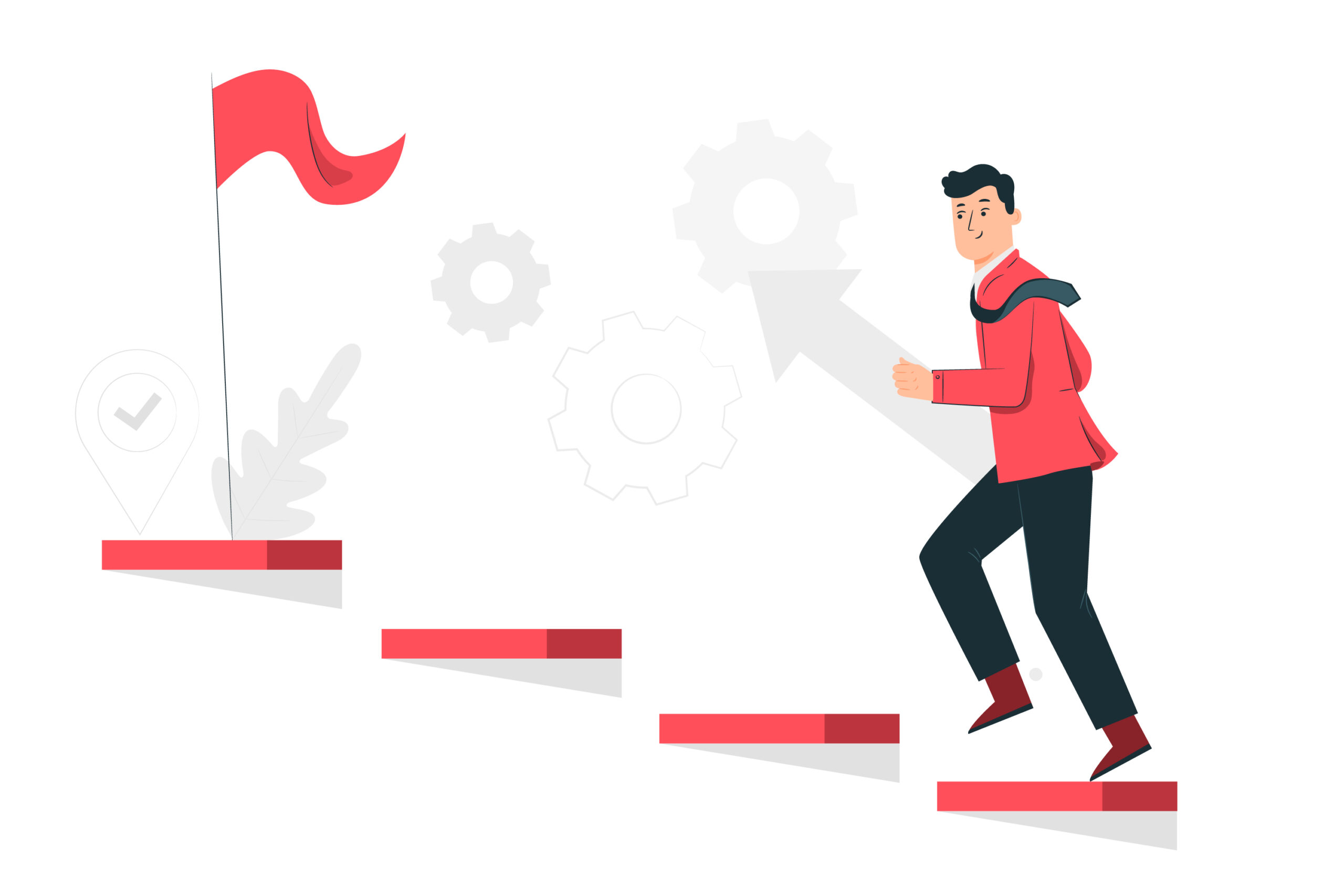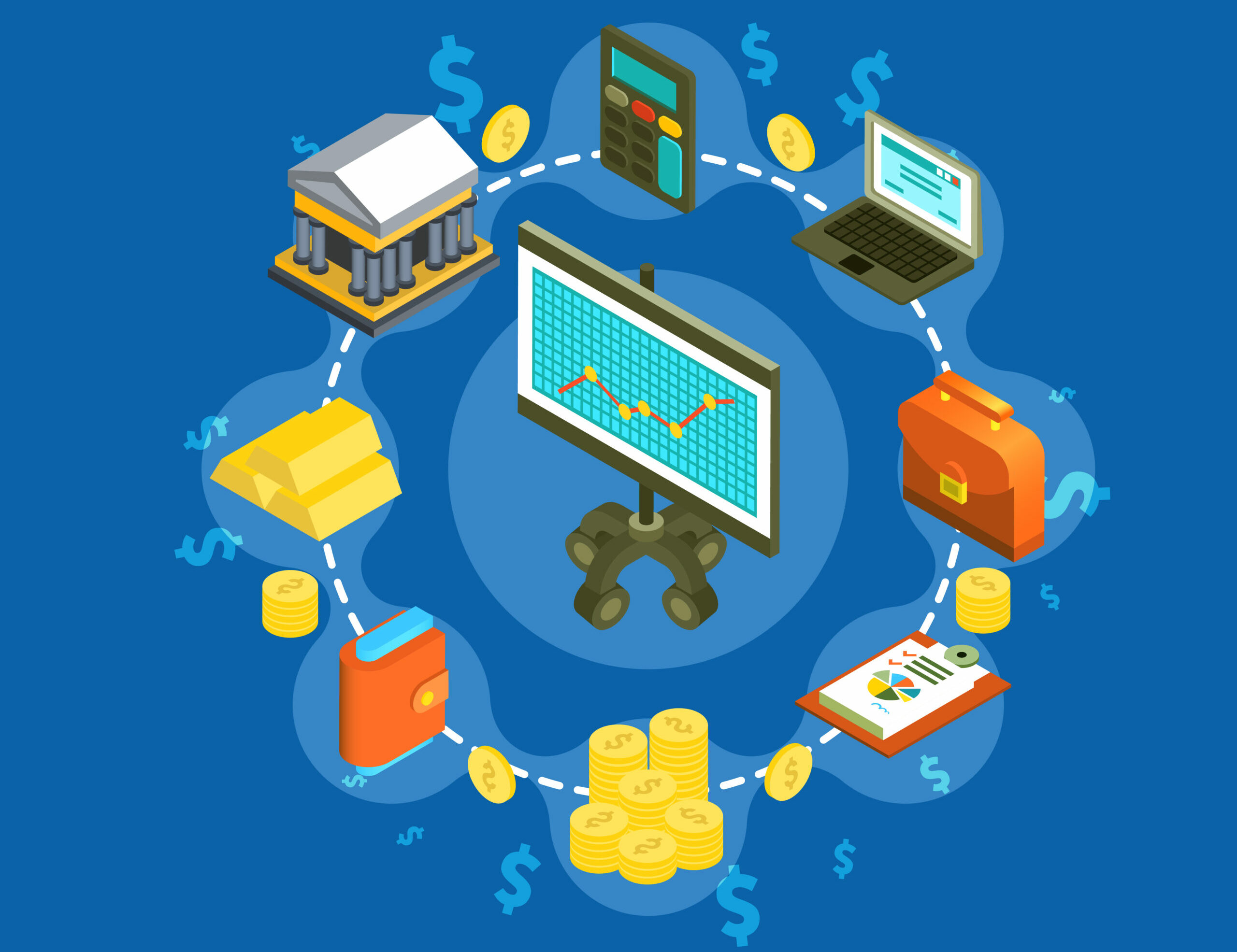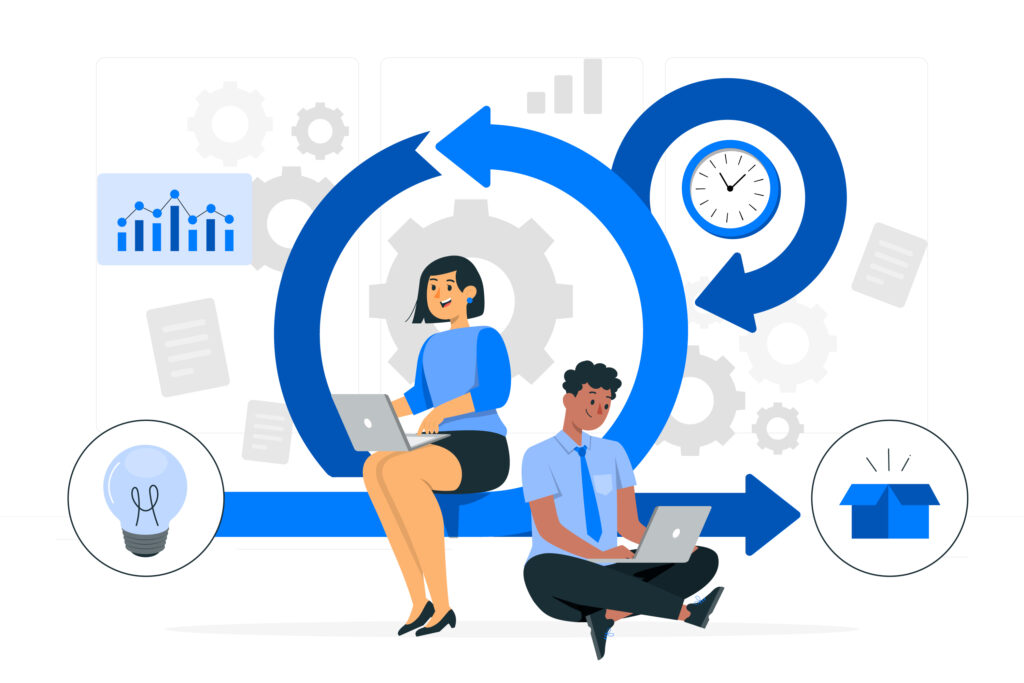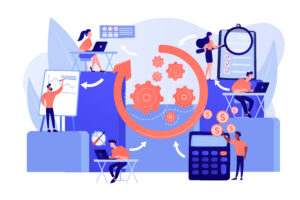Using a contract lifecycle management (CLM) software is a big step. It’s not just about getting new technology; it’s about improving things and strategically using contracts. But to make it work, you need to plan carefully and work together as a team.
First, take a good look at how you handle contracts now. Find out what’s not working well and fix those problems before you start using a contract management system. Get a group of people together from different parts of your company to help with this.
You also need to think about money and how things will change. Make a plan for how much everything will cost, so you don’t get any surprises later on. Get ready to help your team get used to the new way of doing things. Some people might not like change, so you’ll need to help them understand why it’s happening and how it will make things better.
Even before you start using a Contract management system, there are things you can do to improve how you handle contracts. For example, you could put all your contracts in one place so everyone can find them easily. Or you could set up reminders so you don’t miss important dates.
As you start CLM implementation, keep checking how things are going. If something isn’t working, don’t be afraid to change your plan. The important thing is to keep getting better and using your CLM system to its full potential.
What Is Contract Lifecycle Management?

Contract Lifecycle Management means taking care of contracts from the beginning to the end and even after that. It includes making, talking about, agreeing on, and saving contracts. Also, it’s about managing all the things that need to be done with the contract while it’s active.
When companies make contracts, many teams are involved, like legal, buying, sales, and finance teams. The system helps these teams work together better by giving them one place to manage contracts. It also helps by doing some tasks automatically and making sure everyone follows the rules.
A good CLM system lets companies make and keep contract templates, keep track of where each contract is at, get approvals and signatures, and see how well contracts are doing. By using technology to do these things, companies can work faster, make fewer mistakes, and work together better.
Understanding CLM and Its Importance
Contract Lifecycle Management means handling contracts from start to finish. It includes making, talking about, approving, and saving contracts, plus managing all the things that need to happen during the contract’s life.
Getting the contract management software right is important for companies. It helps them make contracts easier to deal with, lowers risks, makes sure they follow the rules and makes their work smoother. It also helps them see all the contract info in one place, so they can use it to make smart choices and manage their relationships better.
Related Article: What Is A Contract? Definition, Importance And Key Terms
CLM as a Game-Changer for Businesses

CLM changes the contract game for businesses by making how contracts are handled and done much better. Before, managing contracts took a lot of time and effort, and mistakes were common. However, CLM systems use technology to make things easier and faster.
One big advantage of CLM is that it makes businesses more efficient. It does this by doing things like making contracts and getting them approved automatically. This saves time and money, so people can focus on more important things, like talking with others about contracts.
CLM software also lets businesses see and control contracts better. People can easily find contract info, see important dates, and check how well contracts are doing. This helps businesses make smart choices and deal with problems before they get worse.
And using CLM can save businesses money. By making contracts faster, reducing mistakes, and following the rules better, businesses can save money and work better. Plus, being able to look at contract info helps businesses make deals that work better for them.
Related Article: Contract Migration: Expert Tips For Success
Key Steps to Prepare for CLM Implementation

Assessing Your Current Contract Management Processes
To prepare for CLM implementation, it is important to assess your current contract management processes. This involves identifying pain points and areas for improvement. Here are some key areas to consider:
- Contract storage and organization: Evaluate how contracts are currently stored and organized. Are they easily accessible and searchable?
- Approval workflows: Review the process for contract approvals. Are there any bottlenecks or delays?
- Contract tracking: Assess how contract data is tracked and monitored. Is there a system in place to track key dates and milestones?
- Compliance and risk management: Examine how compliance and risk management are currently addressed. Are there any areas of concern or potential risks?
Setting Clear Objectives for CLM Implementation
- Streamlining contract management processes to improve efficiency and productivity.
- Enhancing visibility into contract data and key dates to enable better decision-making.
- Improving compliance and risk management by standardizing contract templates and approval workflows.
- Reducing contract cycle times and improving contract turnaround.
Once you have defined your objectives, you can create a roadmap for CLM implementation. This roadmap should outline the key milestones and timelines for each phase of the implementation process. It will serve as a guide for the entire CLM journey, ensuring that you stay on track and achieve your desired outcomes.
Related Article: How To Manage Contracts Efficiently: Best Practices
Components of a Successful CLM Strategy

Selecting the Right CLM Software
Selecting the right CLM software is crucial for a successful implementation. When evaluating CLM platforms, consider factors such as the vendor’s reputation, functionality, ease of use, and scalability. Look for software solutions that have received positive reviews and are recognized by reputable sources such as Gartner.
Additionally, consider whether the CLM platform offers advanced features such as artificial intelligence (AI) capabilities. AI can automate manual tasks, improve contract analytics, and enhance contract drafting and negotiation processes. It can also help improve overall contract management efficiency and accuracy. By selecting the right CLM software, organizations can ensure a smooth implementation and maximize the benefits of a CLM system.
Integration with Existing Systems and Workflows
Integrating a CLM system with your current systems and workflows is important for managing contracts smoothly. It means connecting your CLM software with other important business systems like ERP and CRM. This connection gives you a complete view of all your contract information and makes managing contracts easier.
Workflow integration is also key. This means looking at how contracts are handled in your business already and finding ways to make it smoother and faster. You can do this by automating tasks like creating, approving, and renewing contracts.
When you integrate your contract management system with existing systems and workflows, you avoid entering the same information multiple times, make sure the data is right, and overall make contract management better and faster.
Related Article: Top 7 Contract Management KPIs For Success
Overcoming Challenges in CLM Implementation

Managing Change and Resistance Within the Organization
Managing change and resistance within the organization is crucial for successful CLM implementation. This involves effectively communicating the benefits of the CLM system, addressing concerns and resistance from stakeholders, and providing training and support to ensure smooth adoption.
The legal team, in particular, plays a critical role in driving change and adoption. By involving the legal team early in the process and addressing their specific needs and pain points, organizations can gain their support and expertise in implementing the CLM system.
It is also important to engage and involve various stakeholders throughout the CLM implementation process. By soliciting their input, addressing their concerns, and providing training and support, organizations can foster a sense of ownership and commitment to the new system.
Ensuring Data Security and Compliance
Ensuring data security and compliance is a priority during CLM implementation. Organizations must ensure that the CLM system meets industry standards for data security and compliance, particularly when dealing with sensitive contract information.
The legal team plays a crucial role in ensuring data security and compliance. They should work closely with IT and other relevant stakeholders to define and implement security measures, such as access controls, encryption, and data backup and recovery processes.
It is also important to establish clear policies and procedures for contract management and ensure that employees are trained on data security and compliance best practices. Regular audits and reviews should be conducted to identify and address any gaps or potential risks.
By prioritizing data security and compliance, organizations can ensure the integrity and confidentiality of their contract data throughout the contract lifecycle.
Related Article: How CLM Benefits The Energy Industry?
Best Practices for CLM Implementation

Engaging Stakeholders Early in the Process
It’s super important to get stakeholders involved right from the start when setting up a CLM system. These stakeholders include legal, procurement, sales, and finance teams, who all have a big role in managing contracts. By involving them early on, organizations can learn what they need from the CLM system and make sure it meets their requirements.
Getting input from the people who will use the contract management system every day is just as important. By talking to these users early in the process, organizations can understand what they need and what might cause them problems. This helps make sure the contract management system works well for everyone and helps spot any issues before they become big problems.
In short, involving stakeholders and users early on ensures the CLM system meets everyone’s needs and helps make the implementation a success.
Providing Comprehensive Training to Users
Training users well is really important for making sure a CLM system gets used properly. It helps users understand how the system works and how to use it in their daily tasks. Different groups in the organization, like legal, procurement, sales, and finance, might need different training. So, giving tailored training sessions for each group ensures everyone knows how to use the contract management system effectively.
And it’s not just about the initial training – ongoing support and training are also crucial. This helps users feel confident using the system and solves any problems that come up along the way. Good training means users can make the most out of the contract management system and help the whole organization succeed.
Continuous Monitoring and Optimization Post-Deployment
After deploying a CLM system, it’s crucial to keep an eye on how it’s doing and make it better over time. Monitoring its performance helps spot any problems and fix them quickly. Optimization means tweaking the system based on feedback to make it work even smoother.
By constantly improving it, the CLM system stays helpful and matches the organization’s goals. This ongoing process is super important for making sure the CLM system keeps working well in the long run.
Related Article: What Are Risks Of Not Having A CLM Software?
How to Choose The Right CLM for Your Company?

Choosing the right CLM software is crucial for successful implementation. There are several factors to consider when selecting a CLM software that aligns with your company’s needs and requirements.
Assess Specific Needs
To pick the right CLM software, first, think about how big your company is and how many contracts you have. Then, see if managing your contracts is really complicated or not so much. Lastly, figure out what exactly you need the software to do, like keeping track of dates or helping with contract approvals.
Evaluate Scalability and Flexibility
When you’re looking at how well CLM software can grow and change, make sure it can keep up with your company as it gets bigger. That means it should be able to handle more contracts and more people using it as your business grows. Also, check if it can work nicely with other programs you already use, like CRM (Customer Relationship Management) and ERP (Enterprise Resource Planning). If it can connect easily with these programs, it helps different parts of your business work well together.
Assess Security Measures
When you’re checking security, you’re making sure things are safe. First, you check if the data is scrambled so only the right people can understand it.
Then, you see if there are limits on who can get in. Lastly, you check if everyone follows the rules to keep important data safe. It’s like making sure your secrets are locked up, only certain people can access them, and everyone plays by the rules to keep them safe.
Evaluate Cost and ROI
When you’re figuring out if CLM software is worth buying, there are a few things to consider. First, check how you pay for it – is it a one-time payment or a subscription? Next, see if you need to buy a license for each person who will use it.
Then, think about the ongoing costs for help and maintenance. Lastly, see if the software will help your company make more money over time. If it will, then it might be a good idea to invest in it.
Related Article: Evaluate CLM Vendors: How To Select The Right CLM Solution
FAQs
How Long Does It Typically Take to Implement a CLM System?
The timeline for implementing a contract management system can vary depending on the organization’s needs and requirements. It typically involves several stages, including planning, procurement, deployment, and training. The duration of each stage and the overall implementation timeline will depend on the complexity of the organization’s contract management processes and the size of the implementation team.
Can Small Businesses Benefit from a Contract Management System?
Yes, small businesses can benefit from implementing a CLM system. It offers several benefits to small businesses, including improved efficiency, scalability, and automation. When small businesses make contract management easier, they save time and money, lower risks, and get better at managing contracts overall. This helps them get more out of what they invest in.
What Are the Common Mistakes to Avoid in Contract Management System Implementation?
There are several common mistakes to avoid in CLM implementation. These include a lack of change management and training, which can lead to low adoption rates and resistance from users. Make sure everyone knows why CLM is good, give enough training, and fix any problems that come up during the setup.
How to Measure the ROI of Your CLM Implementation?
Measuring the ROI of your CLM implementation is important to assess the success and impact of the new system. You can figure out how well the CLM system is working by looking at numbers and data.
This includes things like analyzing metrics, tracking key performance indicators (KPIs), and comparing what things were like before and after using the CLM system. By doing this, you can see if the CLM system is helping the organization or not. It helps make smart decisions for making things better in the future.
Conclusion
In conclusion, Contract Lifecycle Management is a crucial tool for businesses to streamline contract processes and enhance efficiency. By understanding its significance, preparing diligently, selecting the right software, and overcoming implementation challenges with best practices, you can set your organization up for success.
Engage stakeholders, provide thorough training, and monitor progress post-deployment to ensure a smooth transition. With a focus on KPIs and leveraging analytics for continuous improvement, measuring the success of your contract management system implementation becomes easier. Choose the right CLM system tailored to your company’s needs for optimal results in enhancing contract management efficiencies.





